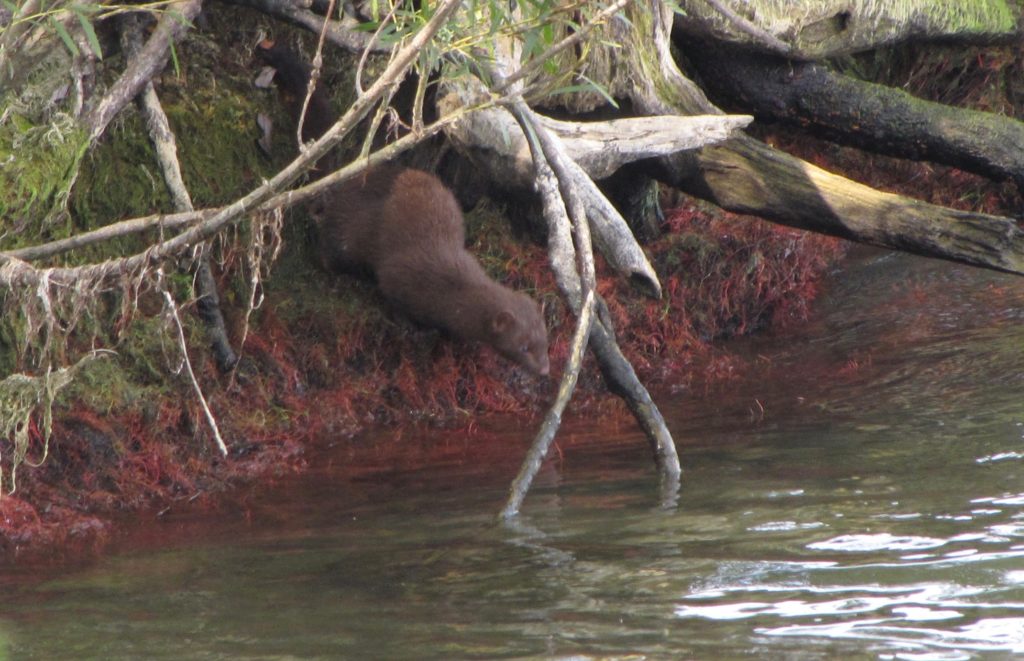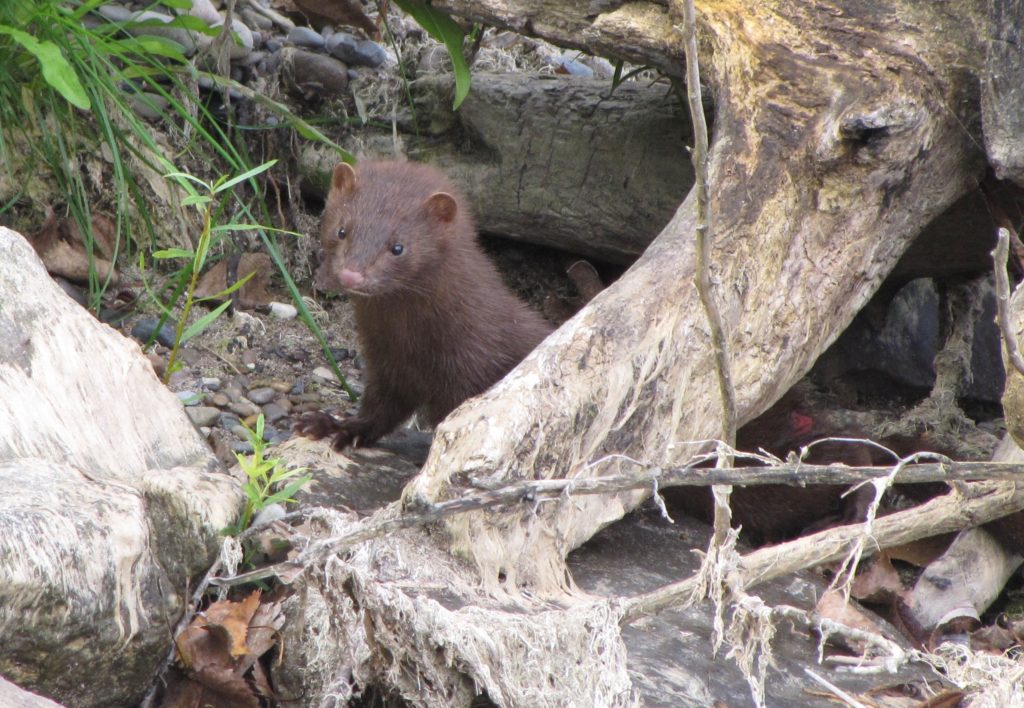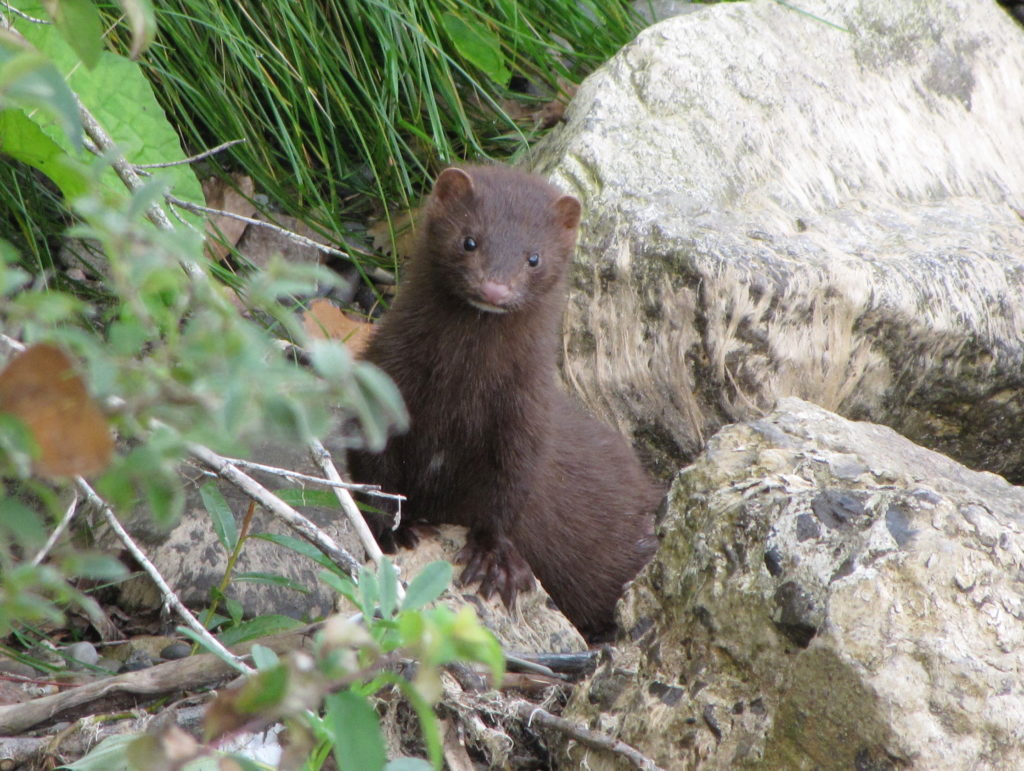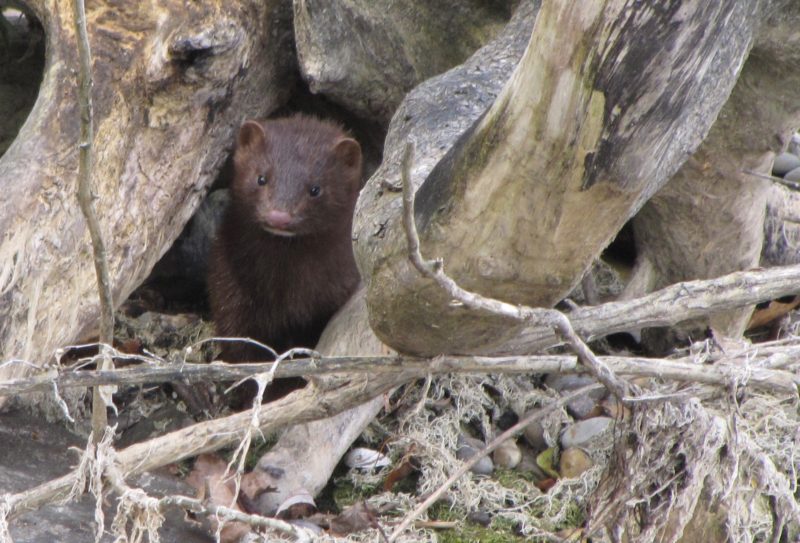A few years ago, I was having a slow day on the Leslie Street Spit, the reclaimed landfill and Important Bird Area that juts into Lake Ontario just east of downtown Toronto. Over the years, I’ve seen more than 240 species of birds on this five-kilometer-long peninsula, including such local rarities as Connecticut Warbler, Northern Hawk Owl, and Boreal Chickadee.
But on this late September afternoon, I wasn’t seeing anything other than a few migrating hawks. In fact, it may have been the hawks who were keeping the other birds out of view. I’d just decided to call it quits, when a mink appeared and ran through the debris and driftwood along the narrow beach below the footpath where I stood. When it reached a ball of cedar roots that had been exposed by shoreline erosion, the mink worked itself inside and disappeared from view.
Mink are common but elusive residents of the Spit, where they feed on fish and mussels, rabbits, squirrels, mice, and birds of every type, including full-grown ducks. Usually, they’re extremely wary, and I’d never been able to photograph one. So I was intrigued when the brown head with small round ears and a white chin patch reappeared in the middle of the cedar roots. The mink sat still while it surveyed the shoreline down to where I stood on the path about 30 meters away.
At the time, I was still using a Canon Powershot. I turned the camera on, extended the zoom, and started taking photos. Over the next several minutes, the mink would either rest with its head exposed or disappear as it dug back deeper into its makeshift den. At one point, it dropped down through the roots so it could rub its chin on the moss just above the waterline. It repeated this rubbing motion several times and seemed to take pleasure in the sensation of having something wet and cool pressed against its muzzle.

I’m not sure exactly when I realized the mink had a fresh wound on its hindquarters, a patch of raw, red flesh just before the tail. Coyotes are another common resident on the Spit, and a predator of mink. Raptors also take a certain number. Once I’d seen a Cooper’s Hawk sitting in an evergreen and tearing strips of flesh from a mink’s lifeless body.
This mink—I’d already started to think of it as my mink—showed no ill effects from its wound. Its eyes were bright, and all its movements were vigorous and sure.

As I watched, it left the tangle of cedar roots and ran down the shoreline towards me. It stopped about 10 meters away, when it found a driftwood tree stump wedged against a pile of rocks. Again, the mink pressed itself into the root ball and twisted around until it felt secure and could poke its head out to survey the beach and keep an eye on me.
It seemed genuinely curious about the person watching it and not at all uneasy, as long as it could regard me from some sort of shelter. If I moved to get a better camera angle, the mink lifted up and turned its head to keep me in view.
Anyone who spends time observing wildlife can tell you about grace moments, those rare occasions when an animal that’s usually shy and uncooperative decides to accommodate the observer and poses and preens right out in the open. That’s what I experienced with this mink—a grace moment, when, without me being aware of it at the time, a type of insubstantial and mysterious bond began to form between us.
A few minutes later, the mink ventured into plain view and stood up halfway with its front paws on a rock while it looked at me. That was the best photo I got, one where you can see the webbing between its claws, the way its paws resemble the fins of a fish. The expression on its face was intelligent and almost gentle, which is not a quality I usually associate with any member of the weasel family.

Then it returned to the tree stump, and I could see the wound again, that bloody clot of flesh, shocking in its brightness.
This all took place on that part of the Spit known as Peninsula D, which for many years has also been the site of a bird-banding station. On my way out, I stopped at the station to tell the staff what I’d seen. I tried to communicate a sense of my excitement at the odd encounter and of my concern for the wounded mink. The two women were getting ready to leave for the day and seemed rather bored by it all. They were used to dealing with mink as predators, vicious pests who’d developed the habit of raiding the station’s mist nets. The snared birds, often dangling upsidedown by their feet, represented low-hanging fruit, easy prey for the nimble mink.
I thought of the mink I’d seen for days afterwards and read everything I could find on its natural history. In captivity, mink can live for 10 years, but in the wild, they average just three. I wondered how long mine had before its wound—the red badge of its mortality—began to fester and grow infected. Two weeks, maybe a month? I wondered what the mink saw with its bright black eyes when it looked at the aged man regarding it. Could it detect my own badge of mortality and understand in its fashion that wherever it went and no matter how soon it passed, I was sure to follow?
